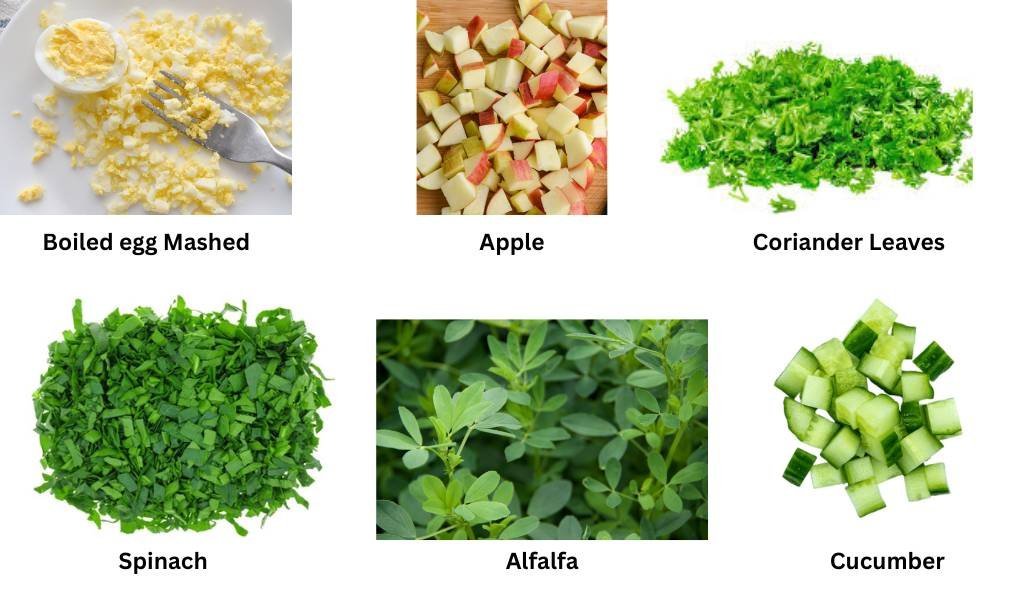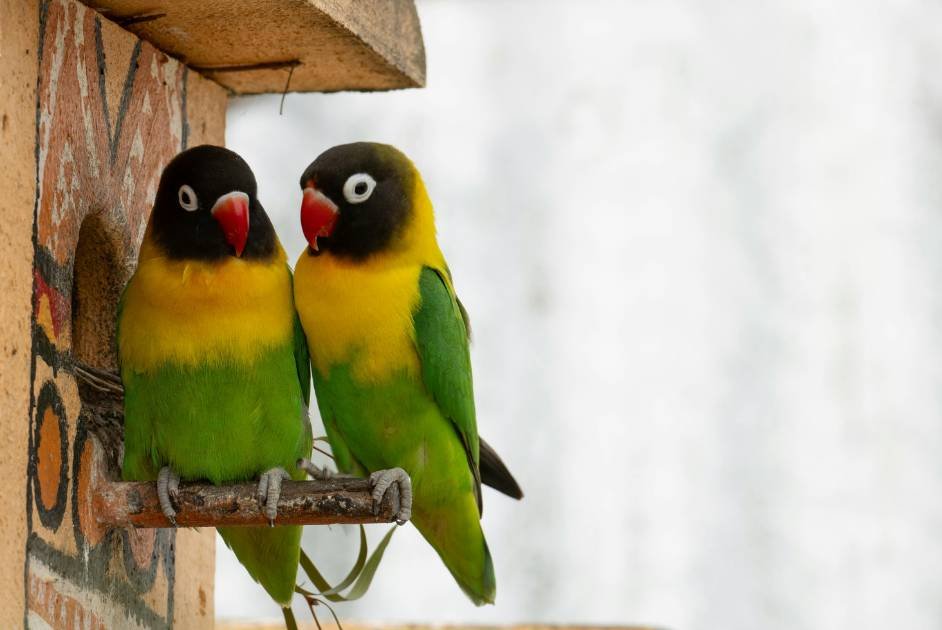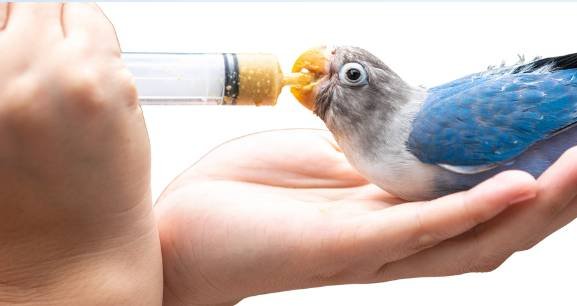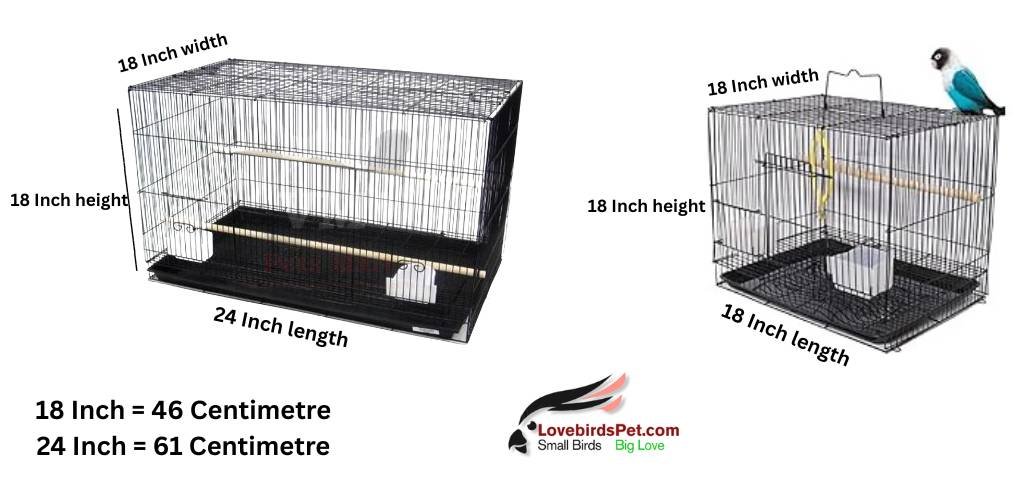Find expert answers to the most frequently asked questions about lovebirds. Learn about breeding, feeding, cage setup, chick care, and health tips from Tahir Ilyas, professional aviculturist.
1. Are lovebirds easy to breed?
Breeding lovebirds is possible even for beginners, but success depends on choosing a bonded, mature pair and providing the right environment. Consistent care, proper diet, and a suitable nesting box are essential for healthy eggs and chicks.
2. At what age do lovebirds reach breeding maturity?
Lovebirds reach sexual maturity between 8 and 12 months of age. However, it’s best to allow them to breed after 12 months, once their behaviour is stable and their bodies are fully developed.
3. How many eggs do lovebirds lay — and how long is incubation?
A healthy female usually lays 4 to 6 eggs per clutch. The incubation period lasts 21 to 23 days, and the hen typically starts incubating after the second or third egg.
4. What diet should I feed a lovebird pair during breeding?
During the breeding season, offer a high-calcium, protein-rich diet. This includes:

- Soft food (cooked grains, soaked seeds, boiled egg mash)
- Fresh vegetables (like spinach, carrots, corn)
- Cuttlebone or mineral blocks for calcium
- Small quantities of soaked pulses or sprouted seeds
Avoid overfeeding sunflower seeds or oily grains during this period.
5. How can I prevent my lovebird from laying eggs too often?
To prevent excessive egg-laying, reduce breeding triggers:
- Limit daylight to 10–12 hours
- Avoid nesting material and boxes
- Separate male and female temporarily if needed
- Feed a balanced diet without over-conditioning foods
Looking to ensure your feathered friend thrives? Don’t forget to check out The Best Diet Plan for Lovebirds: Safe Foods, Portions & Feeding Tips for expert advice on balanced nutrition tailored to your lovebird’s unique needs.
Frequent egg-laying can lead to calcium deficiency and other health issues.
6. What are the signs of egg-binding, and how do I prevent it?
Egg-binding is when a female bird cannot pass an egg. Common signs include:
- Swollen abdomen
- Fluffed-up feathers
- Straining and tail bobbing
- Inactivity or sitting on the cage floor
Prevention includes providing calcium-rich food, cuttlebone, and proper humidity in the breeding area.
7. How do I know if I have a bonded male‑female pair?
A bonded pair will:

- Sit close together and groom one another
- Feed each other (regurgitation)
- Spend time inside the nesting box
- Show less aggression when housed together
Aggression, chasing, or territorial behaviour usually indicates they’re not bonded yet.
8. Can different species of lovebirds be safely bred together?
Crossbreeding (like Peach-faced × Fischer’s) is not recommended. Hybrid chicks are often infertile and may have behavioural problems. It’s best to breed same-species pairs to preserve their natural traits and health.
9. How do I care for chicks — hand‑feeding vs parent‑raising?
If the parent birds are healthy and attentive, natural rearing is preferred. For hand-taming or if parents neglect the chicks:

- Start hand-feeding at around 10 days old
- Use commercial hand-feeding formula
- Maintain hygiene and proper feeding temperatures
Always weigh the chicks daily to monitor growth.
10. What size cage and nesting box do breeding lovebirds need?

A breeding pair needs a cage at least 24″ x 18″ x 18″, with space for movement and flight. Nesting box size should be about 8″ x 8″ x 8″, made of safe, untreated wood, and kept clean throughout the cycle.
11. How do I tell a lovebird’s sex? Is DNA testing necessary?
Most lovebirds are monomorphic, meaning males and females look the same.
- Some breeders guess based on behaviour or pelvic spacing
- For accuracy, DNA sexing through a feather or blood sample is recommended
12. What basic daily care do lovebirds need — diet, toys, cleaning?
Daily care includes:
- Fresh food and water every morning
- Clean cage trays and perches regularly
- Provide chew toys, swings, and branches for activity
- Allow time outside the cage (in a safe area) for flight and bonding
Lovebirds need both mental stimulation and social interaction to thrive. For a complete guide on setting up a safe, comfortable, and enriching space, visit Creating the Perfect Habitat for Lovebirds.
